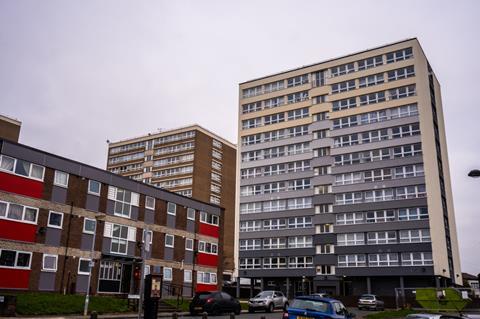While the sector saw an increase in homes for affordable rent, the number of social rent homes fell by more than 6,000
The number of social homes in England has increased by 34,000 since 2022, according to the Regulator of Social Housing’s annual social housing sector statistics.

Providers in the social housing sector increased their stock of homes for affordable rent by around 26,000 over the past year.
Affordable rent homes are those made available to households eligible for low-cost rental housing at a level of no more than 80% (inclusive of service charges) of local market rents.
An additional 14,000 low-cost home ownership properties were delivered. Low-cost home ownership is defined as a property occupied in line with shared ownership or shared equity arrangements.
The number of local authority-owned homes for social rent decreased by 9,000, while private registered providers built, purchased or acquired 3,000 social rent homes, reducing the fall in social rent homes to 6,000.
Social rent statistics refer to all low-cost rental units that are general needs or supported housing, and excluding those classified as affordable rent.
This year’s figures mark the first increase in general needs social rent homes by private registered providers since 2017.
RSH data found that the majority of new homes in the social housing sector were built, purchased or acquired by private registered providers, representing 87% of the overall rise in affordable rent and 98% for low-cost home ownership properties.
The data reveals that in England, 83% of social homes are categorised as general needs (comprising social rent and affordable rent), with supported housing accounting for 11% and low-cost home ownership making up the remaining 6%.











No comments yet